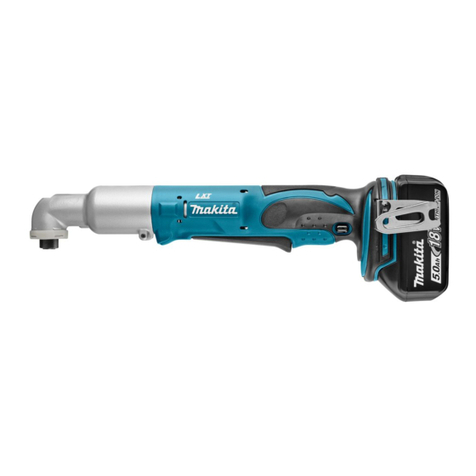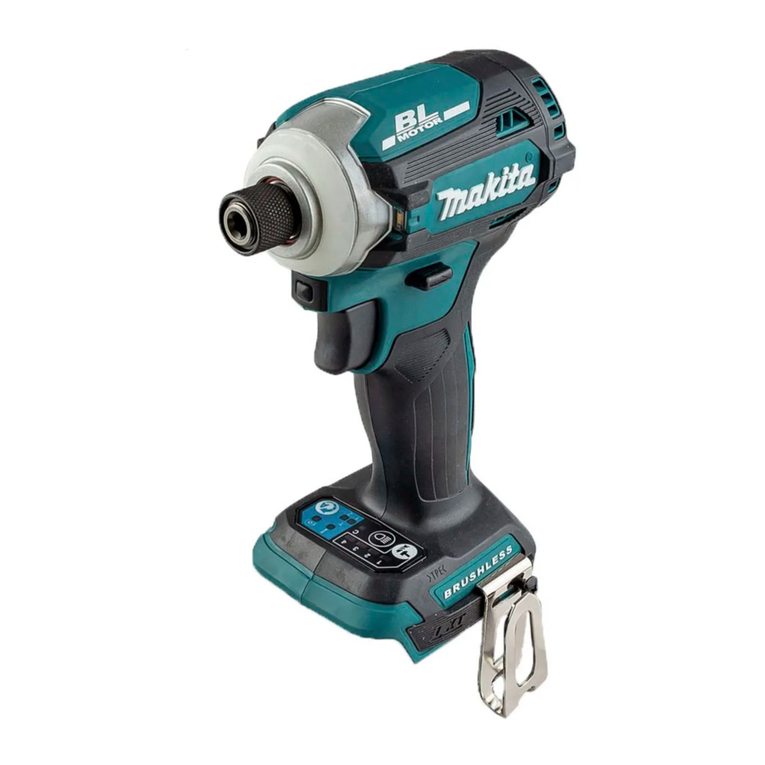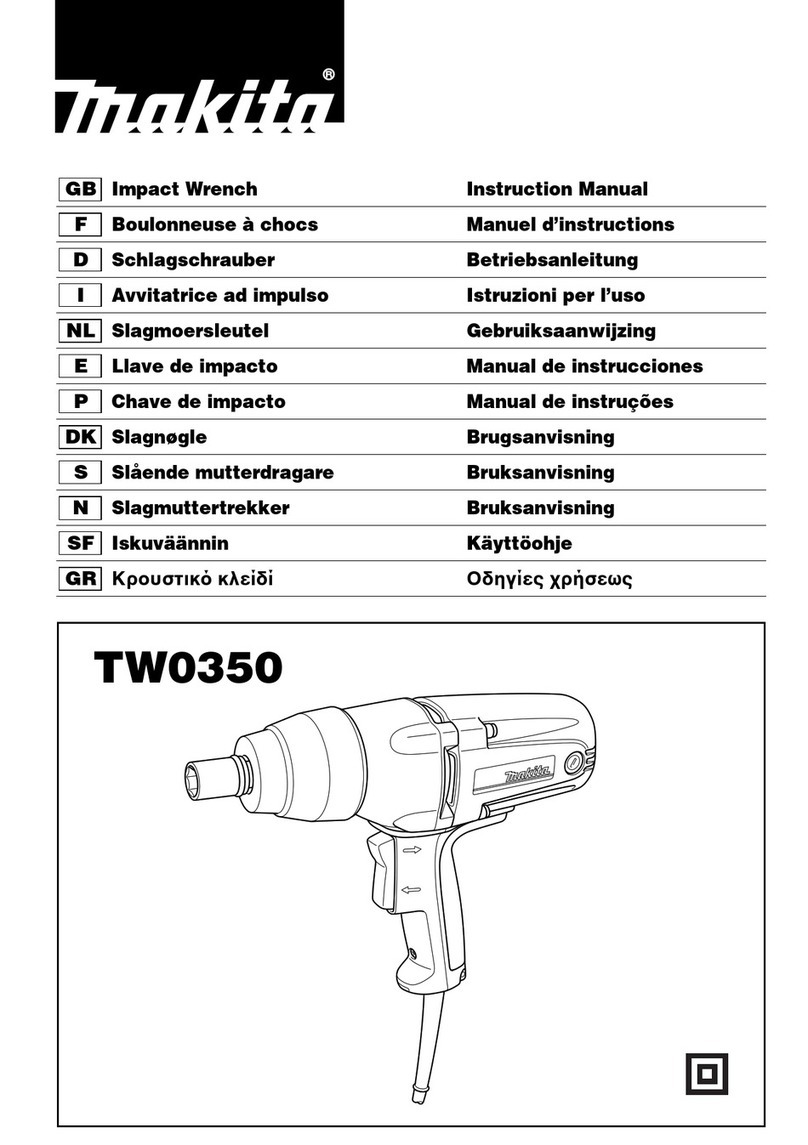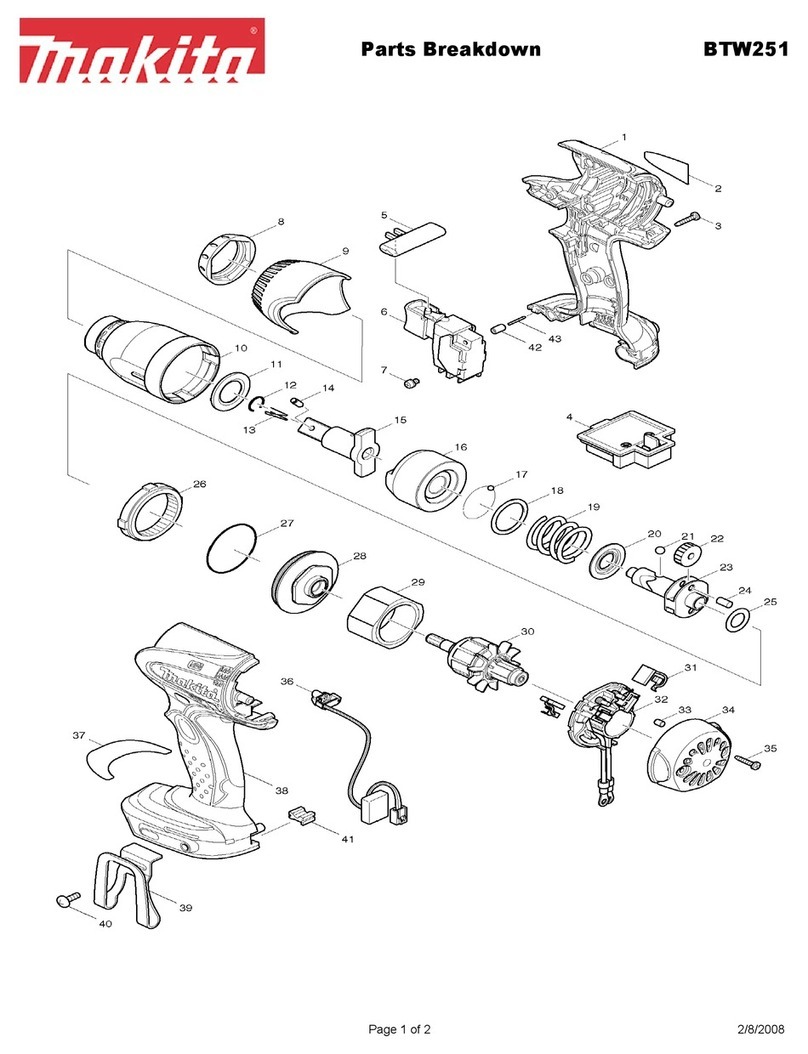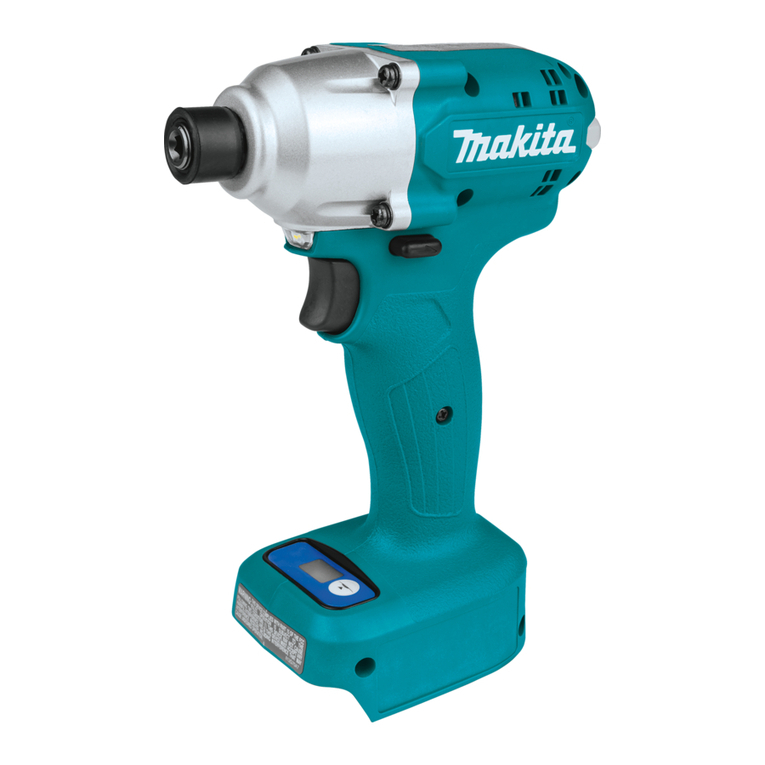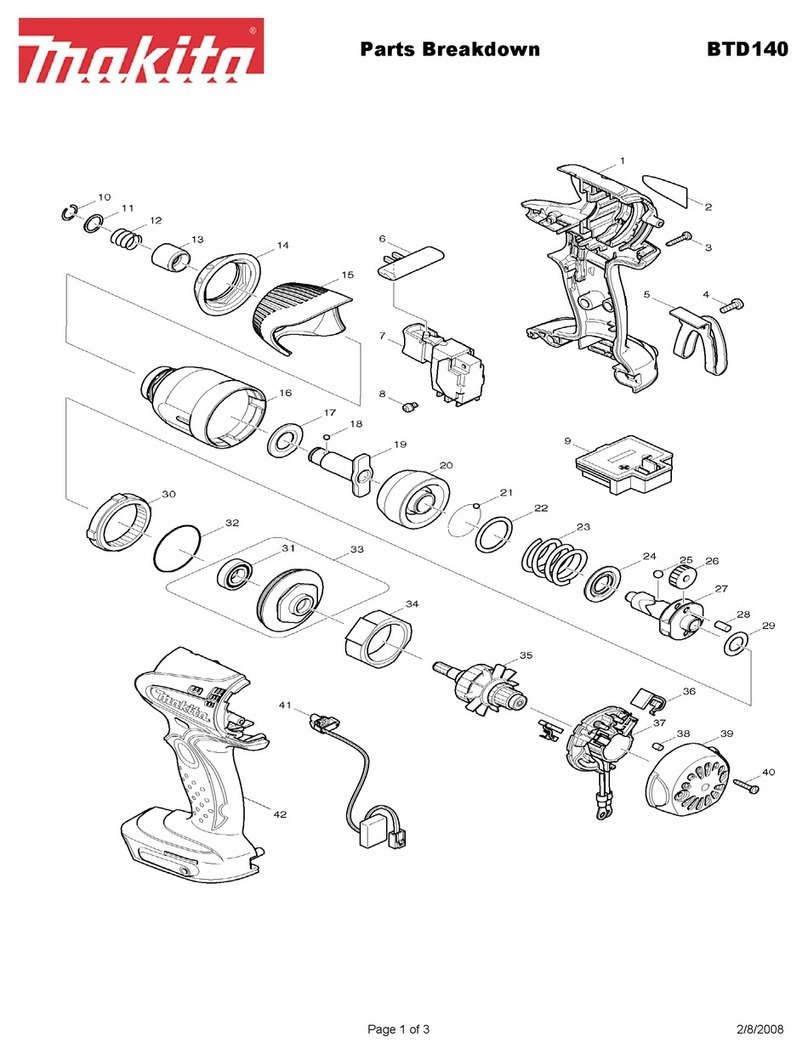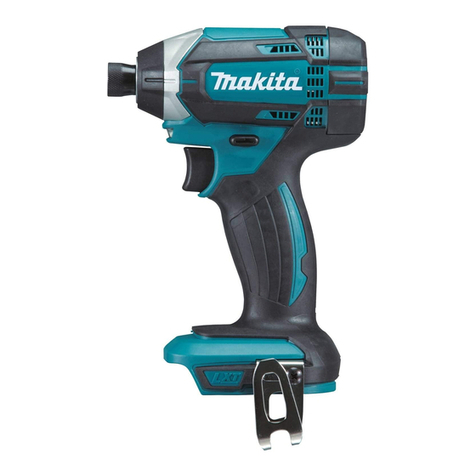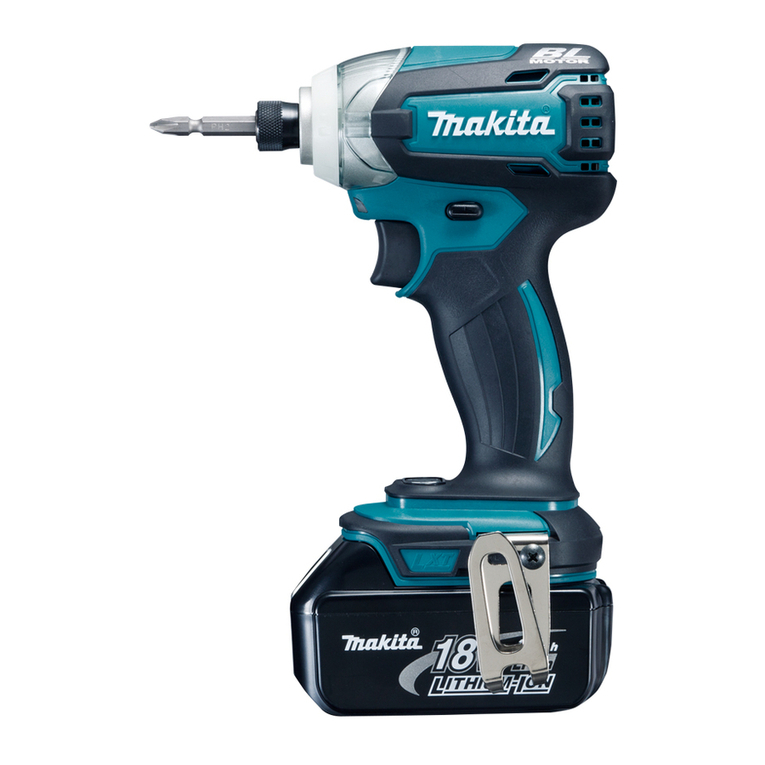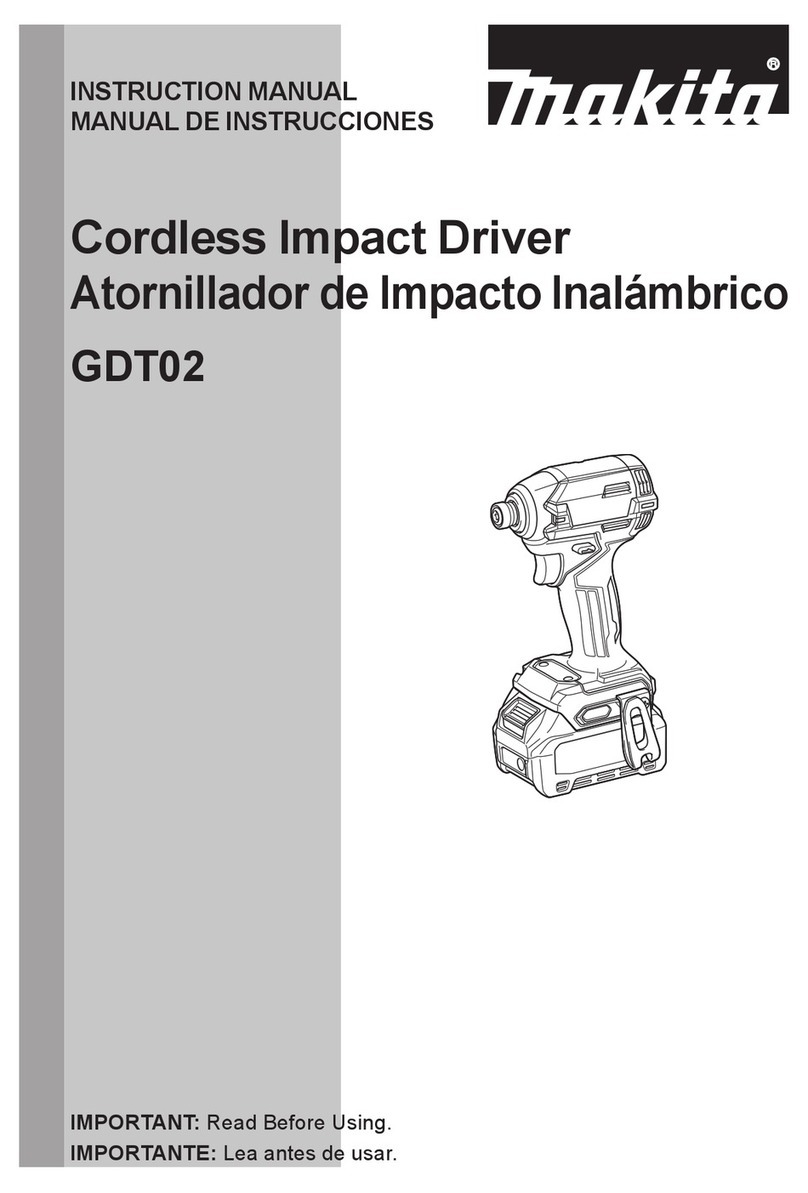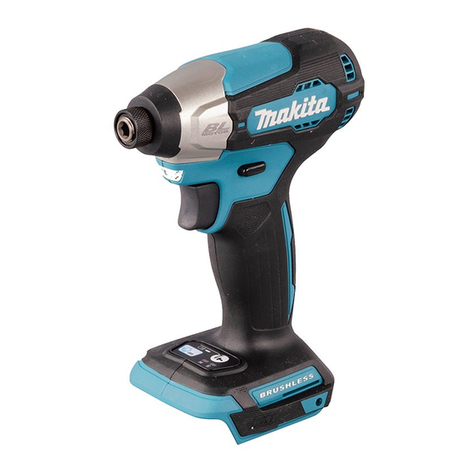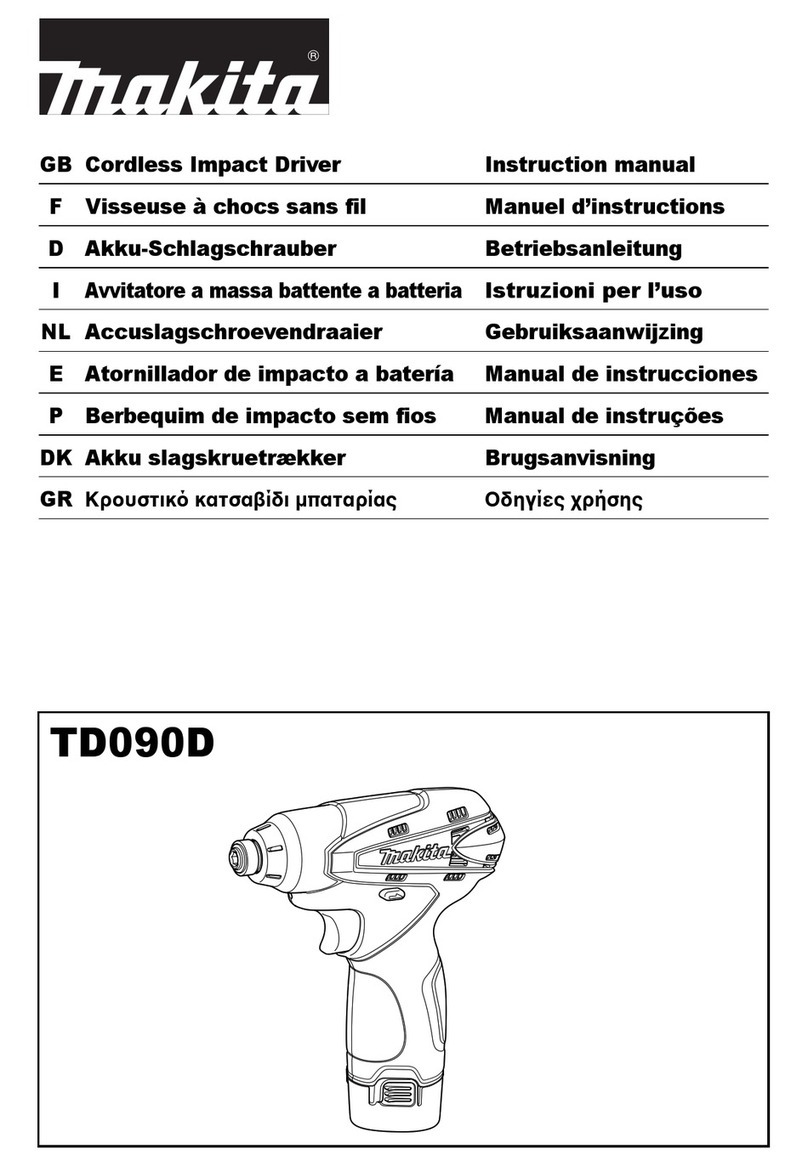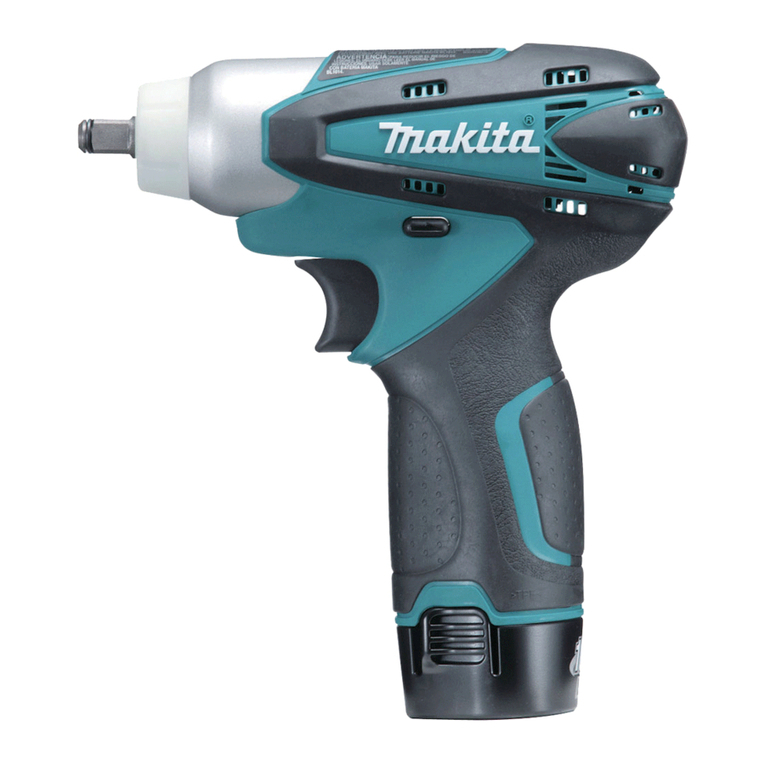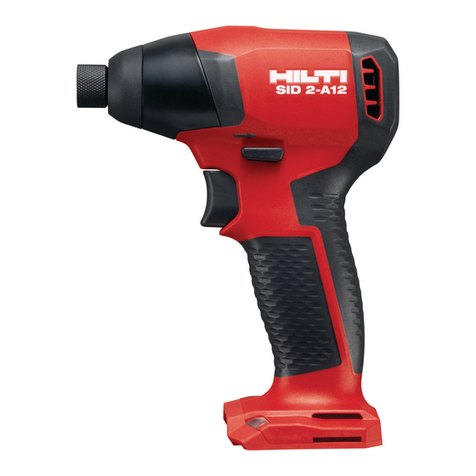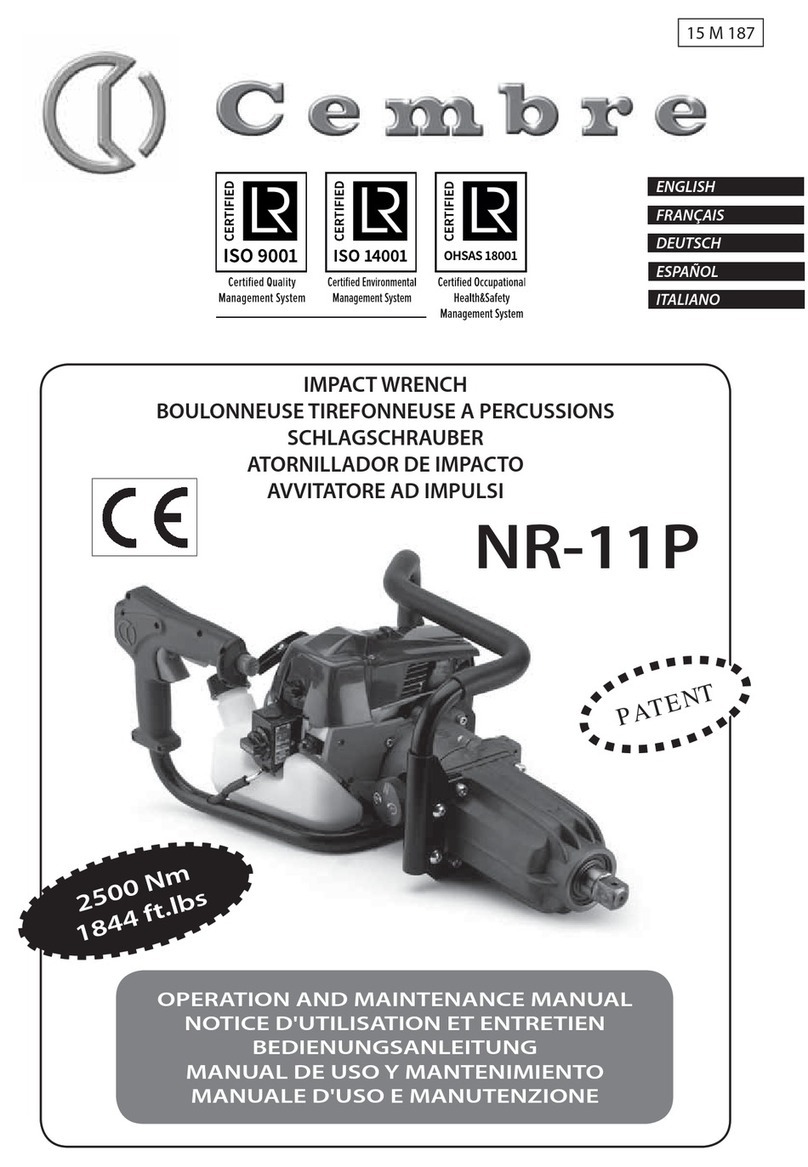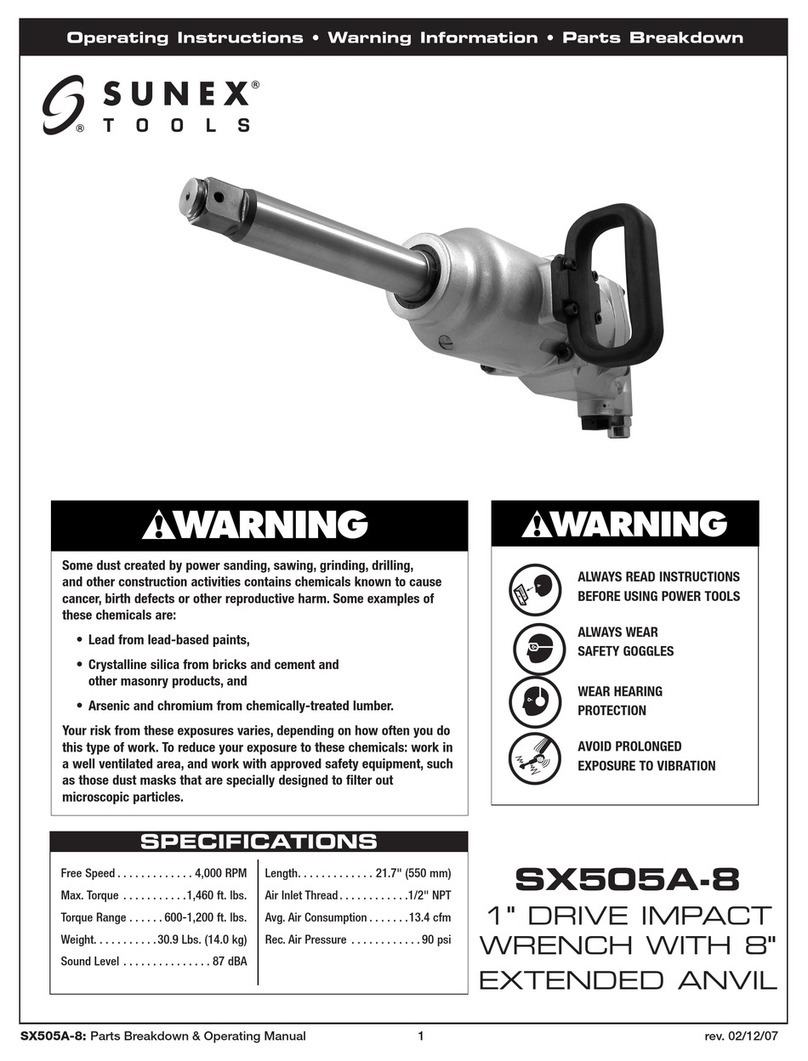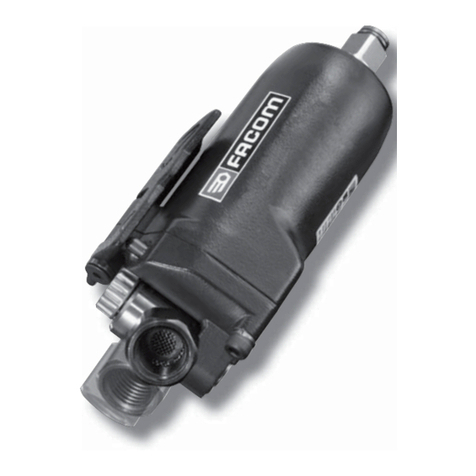18
Werking van de omkeerschakelaar (Fig.5)
LET OP:
• Controleer altijd de draairichting alvorens het gereed-
schap te gebruiken.
• Verander de stand van de omkeerschakelaar alleen
nadat het gereedschap volledig tot stilstand is geko-
men. Indien u de draairichting verandert terwijl de boor
nog draait, kan het gereedschap beschadigd raken.
• Zet de omkeerschakelaar altijd in de neutrale stand
wanneer u het gereedschap niet gebruikt.
Dit gereedschap heeft een omkeerschakelaar voor het
veranderen van de draairichting. Druk de omkeerschake-
laar in vanaf zijde A voor rechtse draairichting, of vanaf
zijde B voor linkse draairichting. Wanneer deze schake-
laar in de neutrale stand staat, kan de trekschakelaar niet
worden ingedrukt.
Bediening (Fig. 6 en 7)
Het juiste aandraaikoppel kan verschillen afhankelijk van
het soort en de maat van de schroef/bout, het materiaal
van het te bevestigen werkstuk, enz. De verhouding tus-
sen het aandraaikoppel en de vastdraaitijd is aangege-
ven in Fig.6 voor de standaardbout, en in Fig.7 voor de
bout met hoge trekvastheid.
Houd het gereedschap stevig vast en plaats de punt van
de schroefbit in de schroefkop. Oefen zoveel kracht op
het gereedschap uit als nodig is om de schroefbit op z’n
plaats te houden. Schakel vervolgens het gereedschap
in om de werkzaamheden te starten.
OPMERKING:
• Wanneer u schroef M8 of een schroef van een kleinere
maat aantrekt, dient u de druk op de trekschakelaar
voorzichtig aan te passen om beschadiging van de
schroef te voorkomen.
• Houd het gereedschap altijd haaks.
• Wanneer u de in de figuren aangegeven vastdraaitijden
overschrijdt, kan de schroef doldraaien of de schroef-
kop of de punt van de schroefbit beschadigd worden.
Het verdient daarom aanbeveling eerst een proefje te
nemen voor het vaststellen van de juiste vastdraaitijd.
Het aandraaikoppel wordt beïnvloed door een groot aan-
tal verschillende faktoren, waaronder de volgende.
Kontroleer na het vastdraaien altijd het aandraaikoppel
met een momentsleutel.
1. Wanneer het batterijpak bijna leeg is, neemt het vol-
tage af en vermindert het aandraaikoppel.
2. Schroefbit of schroefdop
Gebruikt u niet de juiste maat dan heeft een vermin-
dering van de aandraaikoppel plaats.
3. Bout
• In geval het koppelcoefficient overeenkomt met de
boutklasse, hangt het juiste aandraaikoppel af van
de boutdiameter.
• In geval de boutdiameters gelijk zijn, hangt het
juiste aandraaikoppel af van het koppelcoefficient,
de boutklasse en de boutlengte.
4. De manier van vasthouden van het gereedschap en
de positie waarin de schroef in het materiaal vastge-
draaid wordt, beinvloeden het koppel.
5. Bij lagere toerentallen wordt ook het aandraaikoppel
kleiner.
ONDERHOUD
LET OP:
Controleer altijd of de machine is uitgeschakeld en de
accu is losgekoppeld vooraleer onderhoud uit te voeren
aan de machine.
Vervangen van koolborstels (Fig.8en9)
Verwijder en controleer regelmatig de koolborstels. Ver-
vang de koolborstels wanneer ze tot aan de limietmarke-
ring versleten zijn. Houd de koolborstels schoon zodat ze
goed in de houders glijden. Beide koolborstels dienen
tegelijkertijd te worden vervangen. Gebruik uitsluitend
identieke koolborstels.
Gebruik een schroevendraaier om de doppen van de
koolborstelhouders te verwijderen. Haal de versleten bor-
stels eruit, steek de nieuwe erin, en zet de doppen weer
goed vast.
Steek na het vervangen van de koolborstels de accu in
het gereedschap, en laat het gereedschap ongeveer 1
minuut onbelast draaien om de nieuwe koolborstels te
doen wennen. Controleer vervolgens de werking van het
gereedschap en de werking van de elektrische rem bij
het loslaten van de trekschakelaar. Als de elektrische
rem niet goed werkt, moet u deze laten repareren in het
dichtstbijzijnde Makita servicecentrum.
Om de VEILIGHEID en BETROUWBAARHEID van het
product te handhaven, dienen alle reparaties en alle
andere onderhoudswerkzaamheden of afstellingen te
worden uitgevoerd door een erkend Makita Servicecen-
trum, en dat uitsluitend met gebruik van Makita vervan-
gingsonderdelen.
ACCESSOIRES
LET OP:
• Deze accessoires of hulpstukken worden aanbevolen
voor gebruik met het Makita gereedschap dat in deze
gebruiksaanwijzing is beschreven. Bij gebruik van
andere accessoires of hulpstukken bestaat er gevaar
voor persoonlijke verwonding. Gebruik de accessoires
of hulpstukken uitsluitend voor hun bestemde doel.
Raadpleeg het dichtstbijzijnde Makita Servicecentrum
voor verder advies of bijzonderheden omtrent deze
accessoires.
•Schroefbits
• Diverse types originele Makita accu’s en acculaders
• Plastic draagkoffer

